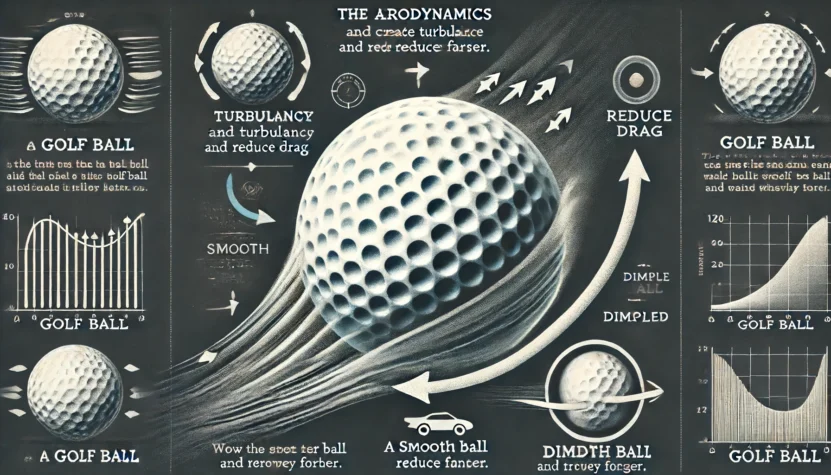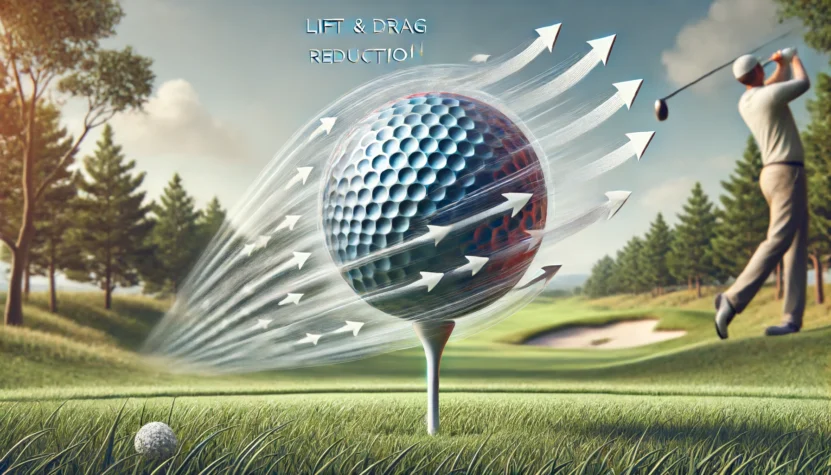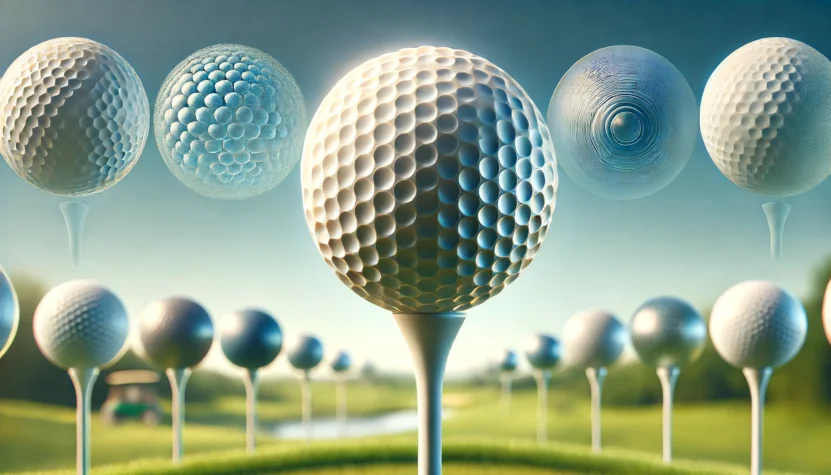Golf is a sport of precision, skill, and strategy. One of the most intriguing aspects of the game is the design of the golf ball. If you’ve ever wondered why these little spheres are covered in dimples, you’re not alone. It’s not just for looks – there’s a real reason behind it.
Let’s explore 7 reasons why golf balls have dimples and how they impact the game.
1. They reduce drag

Ever tried throwing a smooth ball? It doesn’t go very far, right? That’s because smooth surfaces face a lot of drag, slowing them down quickly. Now, imagine a golf ball without dimples – it would struggle the same way.
Those little dimples are game-changers. They create a thin layer of turbulent air that sticks to the ball’s surface, helping air flow more smoothly around it. This reduces drag, letting the ball travel further and faster.
In simple terms, the dimples help the ball cut through the air more efficiently, making your shots go the distance.
Also, find out how to protect golf clubs in cold weather.
How does this work?
When a smooth ball moves through the air, it creates a big wake of turbulent air behind it, increasing drag. Dimples change this. They keep the airflow attached to the ball’s surface for longer, creating a smaller wake and reducing drag. This means the ball can maintain its speed and travel further with less resistance.
By keeping the air close to the ball longer, dimples streamline its flight, making every shot more powerful and precise.
2. Increasing lift

Lift is what keeps the ball in the air, acting perpendicular to its direction of motion. When a golf ball spins, its dimples create a pressure difference between the top and bottom, generating lift – a phenomenon called the Magnus effect. This is crucial for those long drives and controlled shots.
Without lift, the ball would drop too quickly, cutting down the distance it can cover. A good backspin, combined with dimples, generates lift. The faster the ball spins, the more lift it gets, helping it stay in the air longer.
This is key for achieving those long, accurate shots. The spin and dimples work together to create the perfect trajectory for your ball. By mastering this combo, golfers can fine-tune their shots for top performance on the course.
3. Optimizing spin
Spin is crucial in golf. The right backspin can make your ball rise and hang in the air longer, while the sidespin helps you curve shots around obstacles. Dimples on the ball enhance this spin, giving you more control. The consistent dimple pattern ensures your ball behaves predictably, helping you improve accuracy and performance.
With optimized spin, you can confidently execute various shots. This control is essential for navigating tough courses and hitting precise shots.
Predictable performance
Without dimples, a golf ball’s spin would be unpredictable, leading to inconsistent shots. The uniform dimple pattern ensures the ball reacts the same way every time, giving you the confidence to make precise shots.
The predictability of dimpled golf balls means you can focus on your technique without worrying about erratic ball behavior. This consistency is key to improving performance and achieving your goals on the course.
4. Enhancing accuracy

Accuracy is everything in golf. Dimples play a big role in ensuring your ball travels along the intended path. Their consistent design helps reduce the impact of minor imperfections on the ball’s surface, leading to more accurate shots.
By minimizing surface flaws, dimples help you hit your target with greater precision. This accuracy is vital for golfers of all levels aiming for consistency in their game.
Consistency in design
Modern golf balls are designed with precision, and dimples are a key part of that. Each ball undergoes rigorous testing to ensure the dimples are placed and shaped correctly, providing consistent performance for every shot. This meticulous design process ensures each golf ball meets high standards of quality and performance.
Attention to detail in dimple placement and shape is crucial for achieving the desired results on the course.
5. Adapting to different conditions
Not all golf balls are created equal. Manufacturers tweak dimple patterns to get the best performance under different conditions. Some balls are all about maximizing distance, while others focus on control and feel. Knowing the design helps you pick the right ball for your game.
If you choose the right dimple pattern, you can boost your performance in various weather conditions or course layouts. This adaptability is key to playing your best in all kinds of environments.
Customized designs
- Some golf balls are specifically made for certain weather conditions or playing styles. For instance, balls with shallower dimples might be better in windy conditions, while deeper dimples can help you achieve higher lift and longer distances.
- These customized designs let you optimize your equipment based on your unique needs and preferences.
- By choosing the right ball for the conditions, you can gain a competitive edge and play better overall.
6. Minimizing side spin

Dimples help cut down on side spin, which can cause hooks and slices. By reducing side spin, dimples help keep your ball on a straighter path, improving your accuracy and reducing those frustrating errant shots. This is especially helpful for amateur golfers who struggle with consistency.
Minimizing hooks and slices makes the game more enjoyable and your rounds more successful.
Control over spin
With less side spin, you have more control over your shots. Whether you want a straight drive or a controlled fade, the dimple design helps you nail the shot with greater precision. This control is crucial for tackling tough courses and achieving the outcomes you want. Mastering spin control can elevate your strategic play and lead to better results on the course.
7. Dimples improve feel and control
How the golf ball feels when you hit it is important, especially during those short game shots around the green. Dimples play a role in the overall feel, giving better feedback on contact and improving control for delicate shots.
The tactile feedback from a well-struck ball is crucial for making adjustments and honing your technique. This enhanced feel helps you understand your shots better and refine your skills.
Sensory feedback
The sensation you get from striking the ball helps you adjust your swing and improve your game. The right dimple pattern can enhance this feedback, giving you a better sense of how the ball will react on different shots. This sensory feedback is invaluable for making real-time adjustments and achieving consistent performance.
By providing clear feedback, dimples help you fine-tune your technique and enhance your overall experience on the course.
In summary
Dimples on golf balls might seem like a minor detail, but they pack a punch in the game. These little indentations make a big difference in how the ball flies. They help the ball travel farther, stay in the air longer, and fly straighter. They cut down on drag, boost lift, and fine-tune spin, giving players better control and accuracy.

